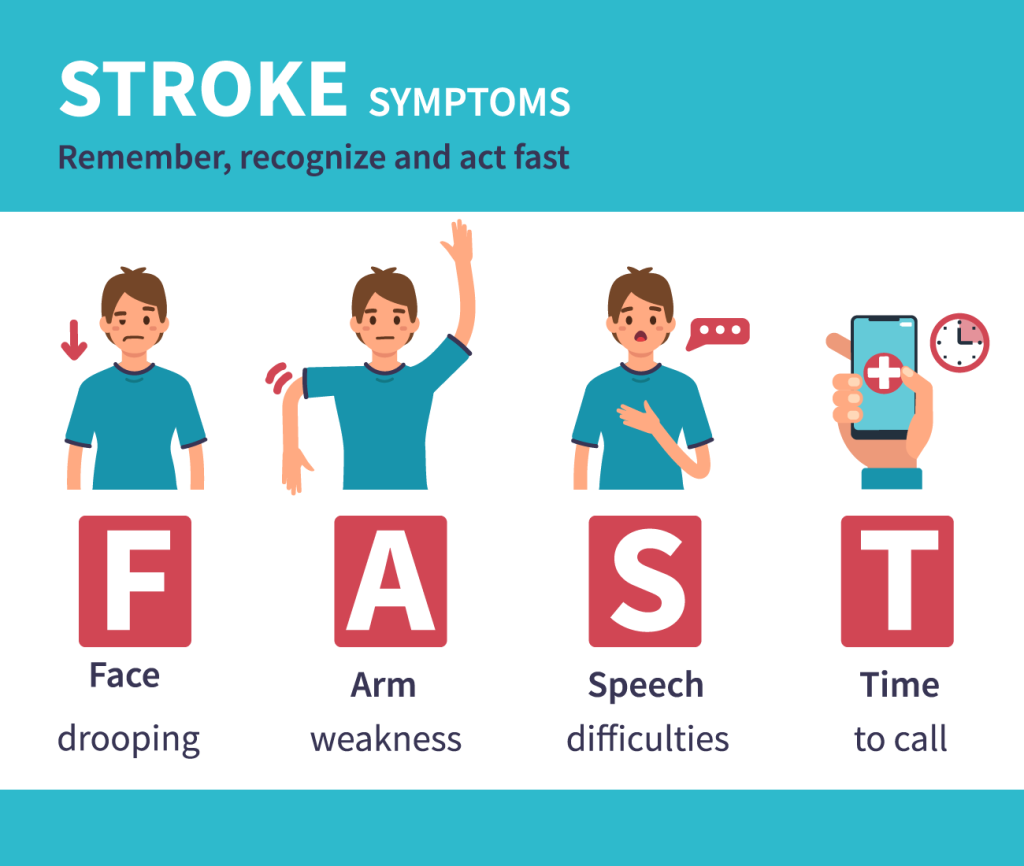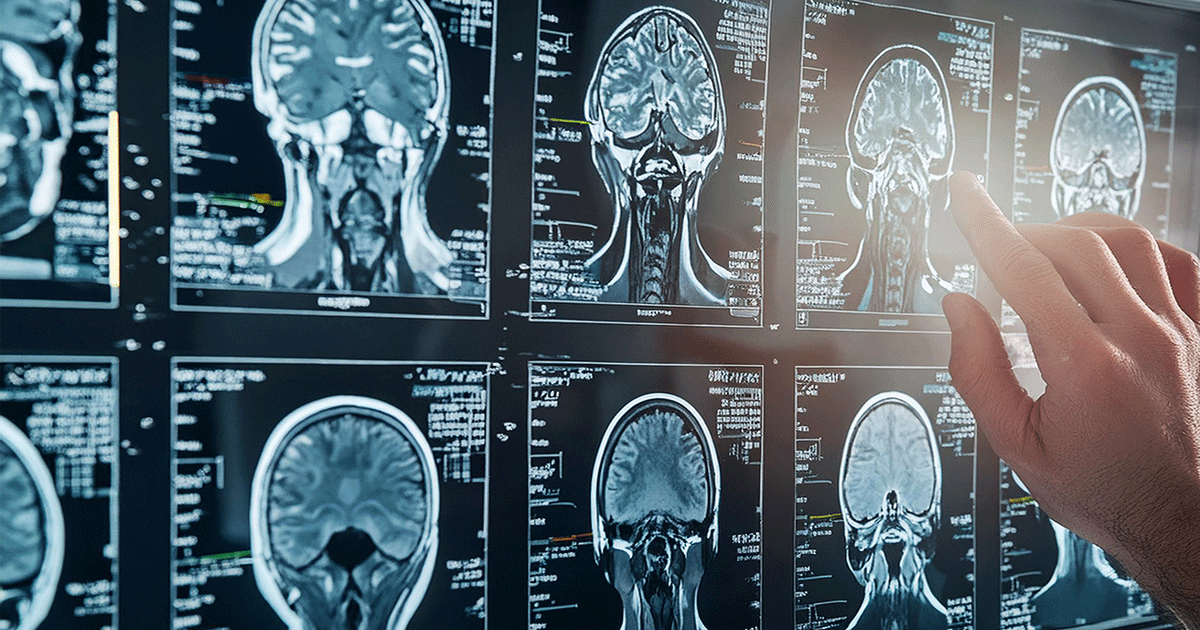Time Lost Is Brain Lost.
Each year, nearly 800,000 people in the U.S. experience a stroke. It’s the fifth leading cause of death and a major cause of disability—yet many strokes can be prevented or treated if caught early. The key? Awareness and fast action.¹
What Is a Stroke?
A stroke happens when blood flow to the brain is blocked or when a blood vessel in the brain bursts. This cuts off oxygen, causing brain cells to die. There are two main types:
– Ischemic Stroke: Caused by a clot blocking blood flow (about 87% of all strokes).²
– Hemorrhagic Stroke: Caused by bleeding in the brain due to a ruptured vessel.
– A TIA (Transient Ischemic Attack) is a temporary blockage, often called a “mini-stroke”—but it’s a serious warning sign of a future stroke.³
What to Look For – Think BE FAST:
Time is critical during a stroke. Use the BE FAST method to spot symptoms quickly:⁴
- Balance: Sudden loss of balance or coordination
- Eyes: Sudden blurred or double vision or loss of vision
- Face: One side of the face droops when smiling
- Arms: One arm drifts downward or is weak when raised
- Speech: Slurred speech or trouble speaking clearly
- Time: Call 9-1-1 immediately if you see any of these signs
Even if symptoms go away, don’t ignore them—it could be a TIA.
What to Do in a Stroke Emergency
Call 9-1-1 immediately. Don’t try to drive or delay help.⁵
- Note the time. Doctors need this to determine if certain treatments like tPA (a clot-busting drug) can be used.
- Keep the person safe. Help them sit or lie down and stay calm until emergency services arrive.
- Avoid giving food, drinks, or medications, especially if they’re having trouble swallowing or speaking.⁶

Who’s at Risk?
Stroke can affect anyone, but risk increases with certain conditions and behaviors:⁷
- High blood pressure, diabetes, or high cholesterol
- Smoking or secondhand smoke exposure
- Family history of stroke
- Obesity or physical inactivity
- Excessive alcohol use or drug abuse
- Age (especially over 55), though strokes can occur at any age
Prevention Is Power
Up to 80% of strokes are preventable with healthy lifestyle choices and medical care.⁸ Here’s how to reduce your risk:
• Control blood pressure – the leading risk factor for stroke
• Eat a balanced diet: plenty of fruits, vegetables, and whole grains
• Stay physically active – aim for 30 minutes most days
• Quit smoking
• Limit alcohol
• Manage chronic conditions such as diabetes and atrial fibrillation
Life After a Stroke
Stroke survivors often experience physical, cognitive, or emotional challenges. However, rehabilitation and support services can lead to meaningful recovery.⁹ Speech therapy, physical therapy, and mental health support are essential parts of the healing process.
A stroke can strike without warning, but with awareness, quick action, and prevention, lives can be saved.
References
1. Centers for Disease Control and Prevention. (2023). Stroke Facts. https://www.cdc.gov/stroke/facts.htm
2. American Stroke Association. (2022). Types of Stroke. https://www.stroke.org/en/about-stroke/types-of-stroke
3. National Institute of Neurological Disorders and Stroke. (2022). Transient Ischemic Attack. https://www.ninds.nih.gov/health-information/disorders/transient-ischemic-attack
4. American Heart Association. (2023). BE FAST: Stroke Warning Signs. https://www.heart.org/en/about-us/heart-attack-and-stroke-symptoms
5. Mayo Clinic. (2023). Stroke: First Aid. https://www.mayoclinic.org/first-aid/first-aid-stroke/basics/art-20056685
6. Johns Hopkins Medicine. (2022). Stroke Emergency Response. https://www.hopkinsmedicine.org/health/conditions-and-diseases/stroke
7. CDC. (2023). Know the Risk Factors for Stroke. https://www.cdc.gov/stroke/risk_factors.htm
8. World Stroke Organization. (2022). Prevent Stroke: Healthy Lifestyle Tips. https://www.world-stroke.org/prevention
9. National Stroke Association. (2023). Life After Stroke. https://www.stroke.org/en/life-after-stroke

